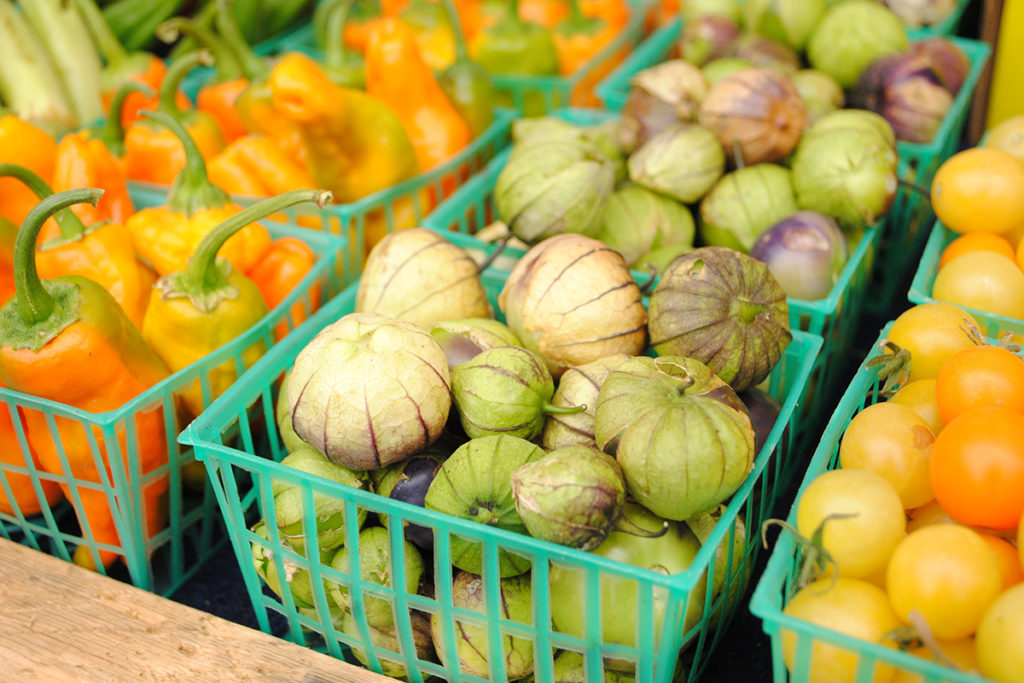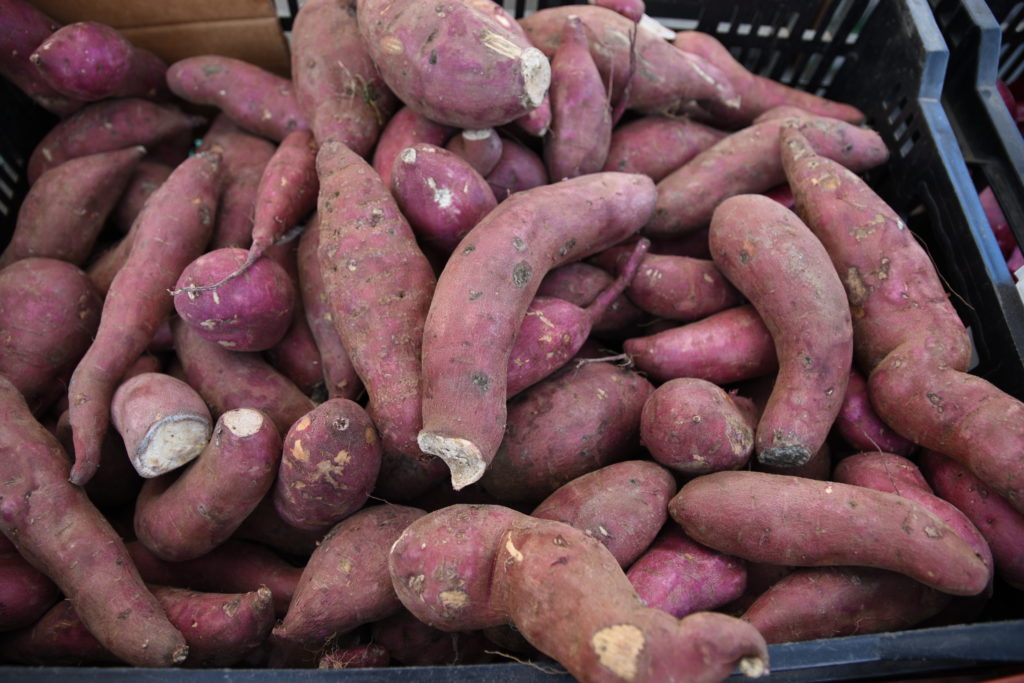10 Foods Native to the Americas
Daisy Prado and Foodwise Staff
November 14, 2020

For thousands of years, indigenous peoples cultivated the land that is now known to be North America. With its versatile and fertile soil, the people native to the region were able to feed their families and communities. Today, the abundant and nutritious foods native to the Americas are cultivated in most continents, fulfilling different cuisines and feeding the world.
Here are just a few foods that are native to the Americas, many of them available at our farmers markets in the fall, and some into winter. As we gather around the dining tables this holiday season, let us acknowledge that the land we inhabit in the Bay Area is the traditional and stolen land of the Ohlone people. Let’s honor the knowledge and work of the indigenous peoples who stewarded the land and tended these crops, and appreciate all of the bounty native to our region.
To learn more about the pre-colonial roots of these foods, read What It Means to Decolonize Your Diet.

Squash
As one of the “Three Sisters,” three main agricultural crops native to North America (along with beans and corn), squash varieties come in different shapes and sizes. Native Americans would grow winter squash and pole beans alongside the tall corn stalks, so that the squash would benefit from the shade, in a technique known as companion planting. It is believed to be one of the first domesticated American crops.
Corn (Maize)
Corn (known traditionally as “maize”) was domesticated by Olmec and Mayan peoples in the region now known as Mexico some 10,000 years ago, and it is said to be one of the most ancient of the domesticated crops. Corn was the name that English settlers gave the crop, and it became a vital source of food for them because it could be stored or eaten fresh. Corn is a summer crop, but early Mesoamerican cultures developed the process of nixtamalization to create masa, a flour used in tortillas, tamales, and other staple foods to be enjoyed year round.
Avocados
Centuries before they became trendy on toast, avocados were cultivated and highly regarded by people native to region of Mexico and Central America. The Mayans even used a glyph of an avocado to represent the 14th month on their calendar. In modern days, California is now the largest producer of avocados in the country.
Peppers
Indigenous peoples of Mexico, Central America, and South America spiced up their meals thousands of years ago, cultivating chili peppers for both medicinal and culinary use. Peppers, both hot and sweet, are dated back to over 10,000 years ago in the Americas. The name “chili” or “chile” comes from the Nahuatl (Aztec) language. The name “pepper” was given to the crop after Christopher Columbus thought it tasted like the Asian spice known at that time as peppercorn.
Potatoes
Though potatoes are often mistaken as an Irish crop, “explorers” brought this starchy vegetable back to Europe from their expeditions. The origins of potatoes can be traced back to the Andes region of South America, where Incas cultivated the crop more than 1,800 years ago. More than a thousand cultivars of potatoes exist today, and over 99% of cultivated varieties originated from Chile.

Beans
Also one of the staple “Three Sisters,” beans completed the trifecta that was vital for a nutritious diet, enjoyed along with squash and corn. Native Americans planted beans alongside the corn stalks so the vines would grow on the stalks themselves. Common beans became a domesticated crop in pre-colonial times.
Tomatoes
Often associated with Italian cuisine, tomatoes actually originated in South and Central America and were domesticated by the indigenous people of Mexico. The Aztecs used tomatoes in their cooking prior to the colonization by the Spanish (who subsequently exported the tomato to Europe). The Aztecs cultivated both green tomatoes (tomatl in Nahuatl), aka tomatillos, and red tomatoes (xictomatl), and used them in a variety of sauces.

Tomatillos
Dating back to 800 BC, when the Aztecs domesticated them, tomatillos are considered a key ingredient in Mexican cuisine. Also called tomate verde in Mexico, the fruit of the tomatillo is generally firm, green, about the size of a large cherry, and meatier than a tomato. The fruit of the tomatillo can be used as a base for chili sauces, known generically as salsa verde (green sauce), and will help lessen the pepper’s hot flavor as well as stimulate the appetite.

Amaranth
Native to Central and North America, amaranth was cultivated and known as huāuhtli by the Aztecs, who used it in food and ritual. The toasted grains are used in treats such as alegría. People around the world value amaranths as leaf vegetables, cereals, and ornamentals. The greens are eaten when young and have a slightly bitter flavor.

Sweet potatoes
This popular tuber has its roots in Central or South America. There is evidence of its domestication in Central America 5,000 years ago, and parts of Polynesia as far back as 1,000 AD. Sweet potatoes grow best in tropical, temperate weather and they do not tolerate frosts or droughts. They are nutritionally rich in dietary fiber, beta-carotene, complex carbohydrates, and other vitamins and nutrients. (The popular orange-fleshed variety commonly referred to as a “yam” in North America is actually a sweet potato.)
Read What It Means to Decolonize Your Diet to learn more.
This article has been updated from a previously published version.
